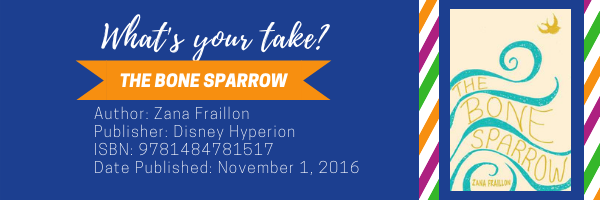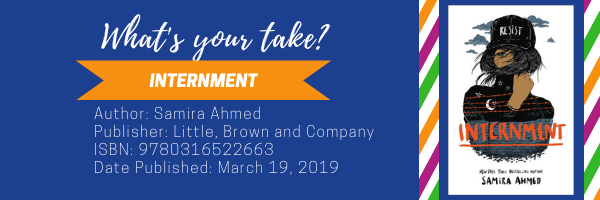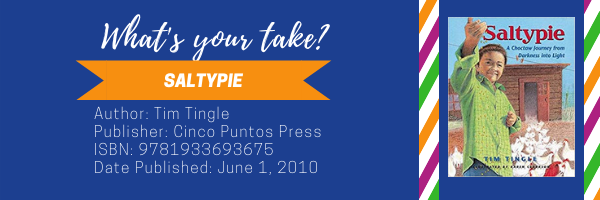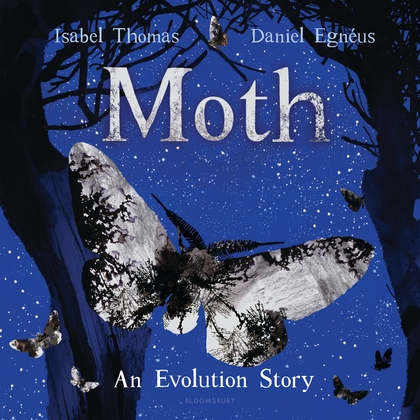 Moth: An Evolution Story by Isabel Thomas chronicles the “change and adaption, of survival and hope” of the peppered moth during the 19th century, a time of industrial environmental changes. Thomas’ exquisite language use leads readers to explore the cycle of life of these moths. The moths emerged from cocoons, “skittered and swooped… and looped the loop all night long” before laying eggs of their own. These moths were typically spotted in nature as white and peppered with specks of dark, but sometimes they were born “with wings as dark as charcoal.” The lighter speckled moths slept on lichen-covered trees and had better camouflage from prey. “The dark-colored moths made a feast for hungry chicks,” because they stood out on the white tree branches. Industrialization changed the environment so that the air was polluted and trees filled with soot, which altered the survival of the light-colored moths. They were no longer camouflaged from their prey. Now charcoal-colored moths survived in abundance. This might sound like an end to the white-colored moth, but Thomas provides hope in this chronicle. Many years later people decided to be more aware of the environment by cleaning the air and burning less pollutants. Over time “both colors of moths find places to hide and survive.” Continue reading
Moth: An Evolution Story by Isabel Thomas chronicles the “change and adaption, of survival and hope” of the peppered moth during the 19th century, a time of industrial environmental changes. Thomas’ exquisite language use leads readers to explore the cycle of life of these moths. The moths emerged from cocoons, “skittered and swooped… and looped the loop all night long” before laying eggs of their own. These moths were typically spotted in nature as white and peppered with specks of dark, but sometimes they were born “with wings as dark as charcoal.” The lighter speckled moths slept on lichen-covered trees and had better camouflage from prey. “The dark-colored moths made a feast for hungry chicks,” because they stood out on the white tree branches. Industrialization changed the environment so that the air was polluted and trees filled with soot, which altered the survival of the light-colored moths. They were no longer camouflaged from their prey. Now charcoal-colored moths survived in abundance. This might sound like an end to the white-colored moth, but Thomas provides hope in this chronicle. Many years later people decided to be more aware of the environment by cleaning the air and burning less pollutants. Over time “both colors of moths find places to hide and survive.” Continue reading
Author: Rebecca Ballenger

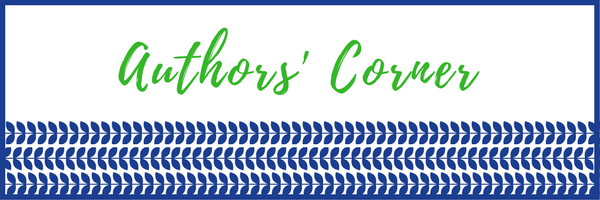
Authors’ Corner: Tara Chace
By Heather Lennon, NorthSouth Books, with Hannah Gill, University of Arizona, Tucson
 Tara Chace, a translator living in Seattle, has translated Norwegian, Danish and Swedish books into U.S. English since 1999. Angryman by Gro Dahle immediately draws a reader in because of its heavy use of imagery that captures the fear and sadness of the main character, Boj. The book tackles a heavy subject in a meaningful and important way. NorthSouth Books’ recent Q&A with Tara Chace can give readers a context to the work’s subject as well as an understanding of translating picturebooks more generally. In that interview (adapted here), Chace discusses the book and her career with translating, as well as Nordic books and the heavy subject matter that Angryman features. Continue reading
Tara Chace, a translator living in Seattle, has translated Norwegian, Danish and Swedish books into U.S. English since 1999. Angryman by Gro Dahle immediately draws a reader in because of its heavy use of imagery that captures the fear and sadness of the main character, Boj. The book tackles a heavy subject in a meaningful and important way. NorthSouth Books’ recent Q&A with Tara Chace can give readers a context to the work’s subject as well as an understanding of translating picturebooks more generally. In that interview (adapted here), Chace discusses the book and her career with translating, as well as Nordic books and the heavy subject matter that Angryman features. Continue reading

MTYT: The Bone Sparrow
By Seemi Aziz, University of Arizona, Tucson, AZ and Celeste Trimble, St. Martin’s University, Lacey, WA
Subhi, who is nine, is a member of the Muslim Rohingya people of Burma and lives in an off-shore Australian detention camp. He was born there, unlike his sister Queenie. All he has known is the life in the detention camp. Barbed-wire fences and the brutality of the guards who oversee every moment of the campsite define his entire lived experience. His dreams at night and his ruthless reality during the day intersect in a never-ending labyrinth. The appalling food and living quarters, the enclosed spaces and the forever-watchful guards are what he knows as life. His family consists of his mother, sister and Eli (a boy who takes him under his wing, protects him from bullies and provides better quality food for him and his family). He meets a young girl who lives on the outskirts of the camp, and who has lost her mother recently. She is a prisoner of her own reality. Together both characters make sense of their lives.

Developing Intercultural Competence with OIBs, Part 5: Taking Action to Support Lasting Change
By Susan Corapi, Trinity International University, Deerfield, IL
Over the last 4 blog posts, we looked at OIB titles that model different characteristics of an interculturally competent person. This week we look at the desired outcome: actions that benefit all (not just the cultural majority or the people in power) and support lasting change. Children can be amazing agents for change, and the titles this week demonstrate the ways characters take action.
Our natural tendency when we look for change agents is to look at heroes. A 2019 OIB title that fits that “hero” category is Peace and Me, written by Ali Winter, illustrated by Mickael El Fathi. The book profiles many Nobel Peace Prize winners. Some are expected (e.g., Mother Teresa, Malala Yousafzai) but others are less well known (e.g., Jean Henry Dunant, Fridtjof Nansen, Rigoberta Menchu Tum). Each one worked diligently to bring peace in their area of the world. However, this week the focus is more on kids who are not known as heroes and the action that they take, believing that they can have an impact on their world. Continue reading

MTYT: Amal Unbound
By Seemi Aziz, University of Arizona, Tucson, AZ and Celeste Trimble, St. Martin’s University, Lacey, WA
In Amal Unbound by Aisha Saeed, Amal is an outspoken Pakistani teen who is confident in who she is. She lives in a small village in Punjab (the largest province in Pakistan comprising 62% of Pakistan) and is educated there. She wants to be a teacher and loves reading. She lives there with her father, mother and many younger sisters. Her mother is pregnant again and afraid that she will bear another girl. Amal happens to come in front of the car of the son of village elder and powerful local landlord, Jawad. She confronts the rude person and as a result the landlord calls in Amal’s family debts. Amal ends up in the landlord’s home as a payback. She befriends other servants as well as Jawad’s mother. She has it easy as she is only person serving the mother and not doing any menial labor. In her time there, she discovers criminal actions by the landlord and reports it. She ends up connecting with Asif (a U.S. educated teacher) in the village’s literacy center, funded, ironically, by the Khan family. This is where she learns that the significant family she works for is not invincible. Indentured servitude, class, gender and literacy are some of the themes this novel explores.

Developing Intercultural Competence with OIBs, Part 4: Feeling Comfortable Living in the Borderlands Between Cultures
By Susan Corapi, Trinity International University, Deerfield, IL
This week’s characteristic of intercultural competence is hard to “pin down” with good reason because it involves having a flexible mindset. Homi Bhabha, a Harvard professor who has written about this in his essay The Location of Culture (1994), calls it living in the present in the borderlands. He explains that instead of thinking of ourselves as belonging in certain cultures or spaces, we think of ourselves as in between, or the area between categories where things are fuzzy and we are redefining some of our identity. It is a place of tension–no doubt about it. But it is also an exciting place because it is an area of growth. It is a willingness to live in the messy areas instead of feeling the need to define everything in fixed categories. Continue reading

MTYT: Internment
By Seemi Aziz, University of Arizona, Tucson, AZ and Celeste Trimble, St. Martin’s University, Lacey, WA
Continuing on the theme of displacement and its representations in young adult and children’s literature, we turn our attention to Internment by Samira Ahmed. Layla Amin is an everyday American minding her own business before an Islamophobic president of USA orders a round up all Muslims and throws them in internment/detention camps due to the faith that they follow. Layla’s father is a professor at a university and writes poems with revolutionary content. He loses his job and his books are burned. The detention camp that the Amins are relocated to is situated close to the actual detention camp that the Japanese internment camps were located in California. It is headed by a director who thinks he is above the law and orders attacks on the inhabitants and is deliberately cruel to the women. Layla takes action and riles up the rest of the teenagers in the camp to conduct demonstrations in order to be released from the camp. There is a national uproar as her blog posts and videos get out to the public, which brings reporters and other people to be stationed outside the camp and sends Red Cross workers in the camp as observers. Some guards (especially one in particular) and Layla’s Jewish boyfriend, on the outside help. It is a novel that has hope in its culmination.

Worlds of Words Exhibit Shows Visual Narratives Are Neither “Silent” Nor “Wordless”
Worlds of Words in the University of Arizona College of Education launches “Visual Narratives: Connecting Across Languages and Cultures”, an exhibit of global picturebooks that tell stories primarily through visual images. The exhibit is inspired by the “Silent Books, from the World to Lampedusa and Back,” a traveling exhibit of global books from the International Board on Books for Young People. The exhibit is on display now through December 2019 with an open reception from 3 to 4:30 p.m. on July 25.
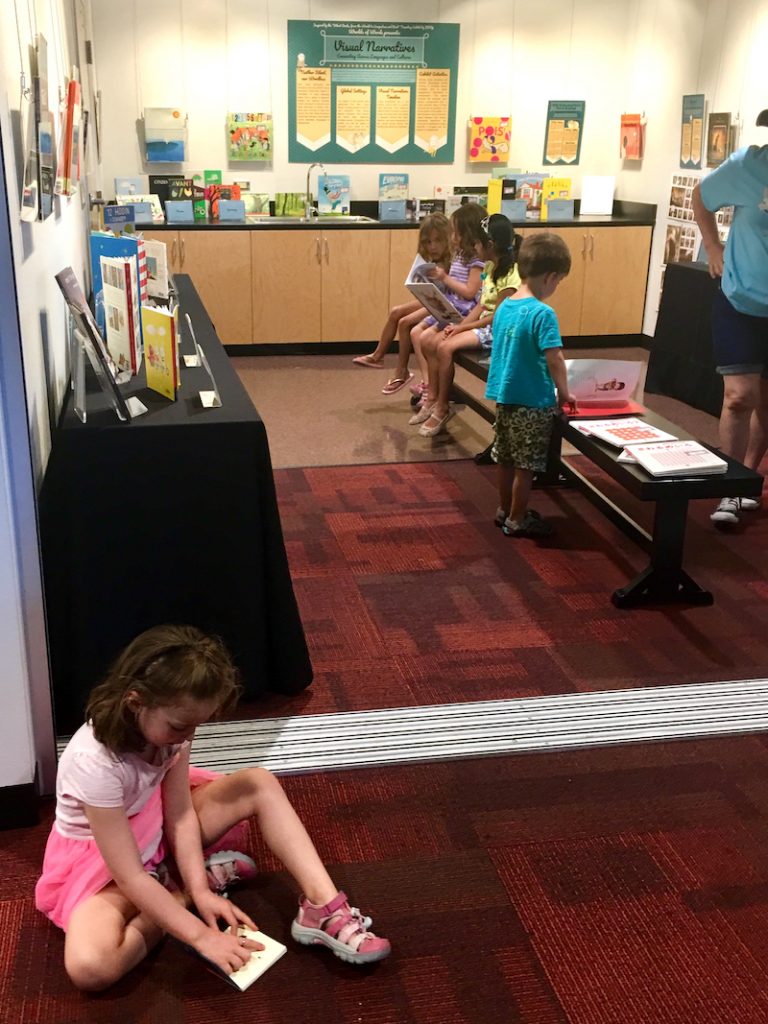
Second and third graders from UofA’s Fusion Camp engage with books from around the world that are part of the “Silent Books” exhibit from the International Board on Books for Young People, now on display in Worlds of Words as part of their Visual Narratives exhibit.

Developing Intercultural Competence with OIBs, Part 3: Seeing Ourselves with Multicultural Identities
By Susan Corapi, Trinity International University, Deerfield, IL
When people ask me to describe myself, I am hard-pressed to know where to begin. Do I start at the very beginning and talk about all the places I have lived that shaped the way I interact with current life events? Or do I start even further back and talk about my parents and grandparents because they shaped my early values? Or maybe I should start with my husband, sons, daughter-in-laws and grandkids and the way living with them has shaped my views on childrearing, family dynamics, nutrition, etc.? Or should I begin with the life-changing experience of being connected to the work of Worlds of Words? Or I could describe the ways working at a university has shaped the questions I ask or the professional books I read. All of these cultures I belong to have molded me into the person I am. I see myself as multicultural–a person who belongs to multiple groups who have shaped (and continue to shape) my beliefs and values that in turn impact the way I deal with life events.
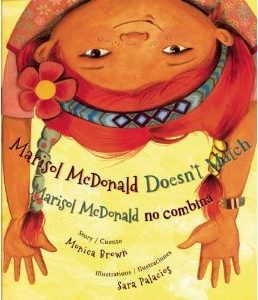 One of my favorite book characters who exhibits this same multicultural view of herself is Marisol McDonald (Marisol McDonald Doesn’t Match by Monica Brown and Sara Palacios). While others see her as a person who doesn’t “match” because she does not follow societal patterns, she sees herself as a person who loves all the parts of her Scottish/Peruvian/American background. So she eats peanut butter burritos, wears colorful dresses with her Peruvian hat (a gift from her grandmother) and throws in Spanish words when they express her thoughts better than English words. Marisol embodies the third descriptor of interculturally competent people: folks who see themselves with multicultural identities. This week we will look at several of the titles on the USBBY Outstanding International Books 2019 list list that serve as examples of multicultural identities. Continue reading
One of my favorite book characters who exhibits this same multicultural view of herself is Marisol McDonald (Marisol McDonald Doesn’t Match by Monica Brown and Sara Palacios). While others see her as a person who doesn’t “match” because she does not follow societal patterns, she sees herself as a person who loves all the parts of her Scottish/Peruvian/American background. So she eats peanut butter burritos, wears colorful dresses with her Peruvian hat (a gift from her grandmother) and throws in Spanish words when they express her thoughts better than English words. Marisol embodies the third descriptor of interculturally competent people: folks who see themselves with multicultural identities. This week we will look at several of the titles on the USBBY Outstanding International Books 2019 list list that serve as examples of multicultural identities. Continue reading

MTYT: Saltypie
By Seemi Aziz, University of Arizona, Tucson, AZ and Celeste Trimble, Celeste Trimble, St. Martin’s University, Lacey, WA
As we continue to focus on the theme of displacement and its representations in young adult and children’s literature, we turn our attention to Saltypie by Tim Tingle. Through family history of racism and displacement, as well as powerful family love and togetherness, Saltypie tells the true story of a young Choctaw boy and his grandmother. In this 2010 picturebook put out by Cinco Puntos Press, Choctaw storyteller Tim Tingle shares a story from his own family. One central concept, highlighted in the title, is that Tingle’s grandmother is blinded by a racist neighbor throwing a rock at her after they moved from Oklahoma to Texas. She regains her sight through an eye transplant much later in her life. Reviews and awards for Saltypie include ALA Notable Children’s Books, 2011, Booklist, 05/01/10, Kirkus Reviews, 04/15/10, Library Media Connection, 11/01/10, Publishers Weekly, 04/26/10, School Library Journal, 05/01/10, and Wilson’s Children, 10/01/10.

